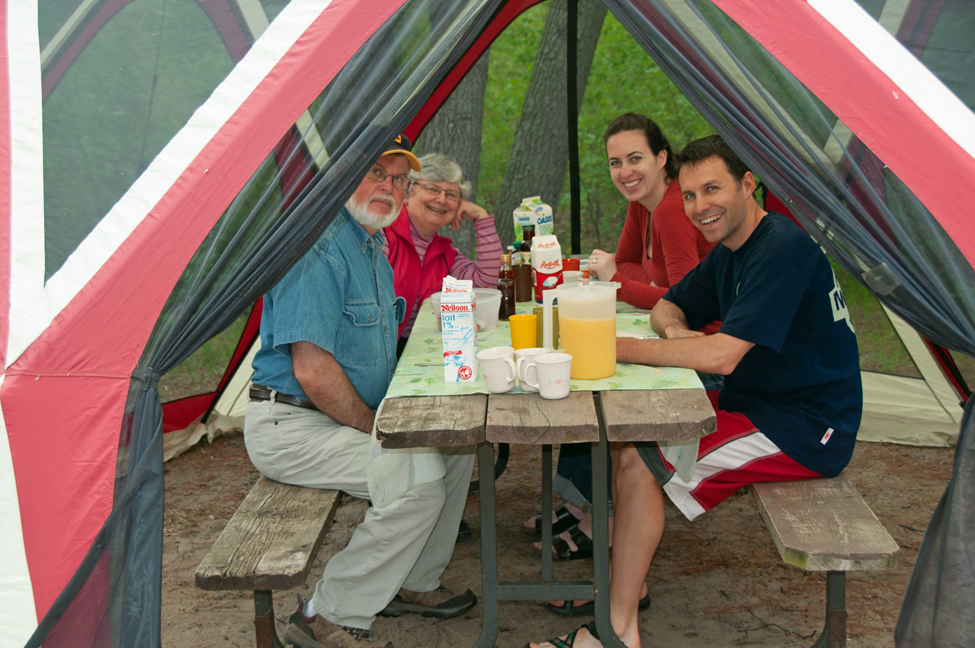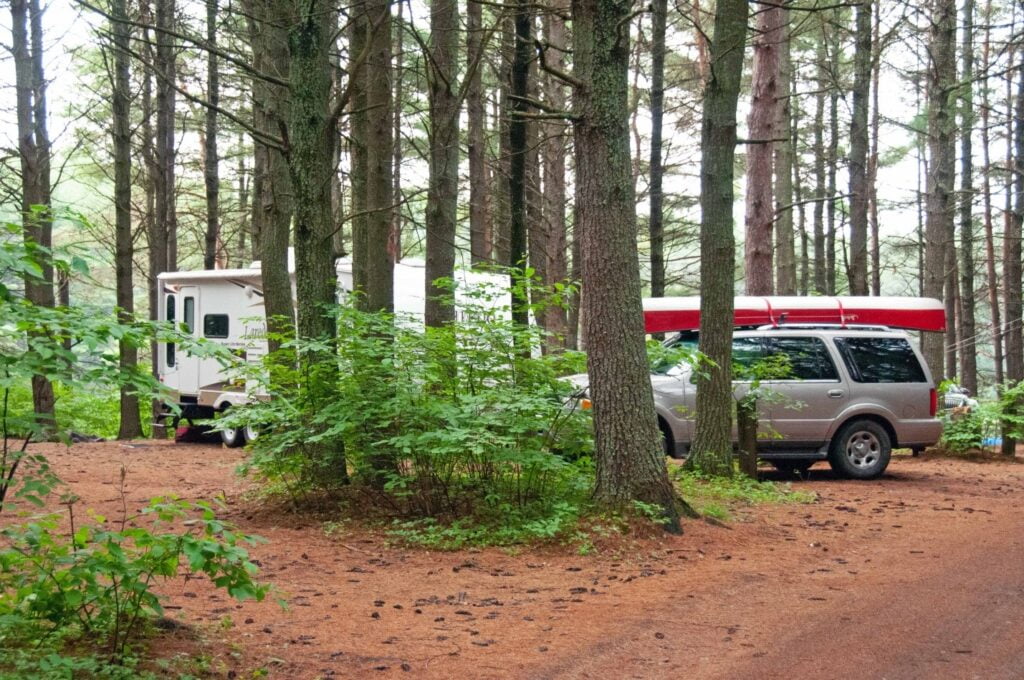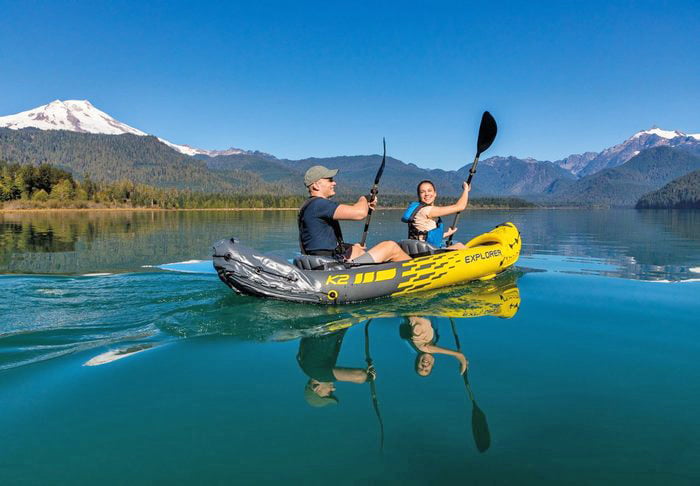Ontario Provincial Parks provide the single largest source of camping in Canada. The 100 operating parks contain 19,253 developed campsites as of 2019. There are another 8,000 backcountry campsites, largely accessible by canoe only. Ontario’s Conservation Areas contain about 312 Conservation Areas with 8,600 campsites. This supply of campsites has remained relatively static for decades. The vast majority of park campgrounds in these two systems were built in the period of expansion after World War 2; with construction largely ending in the 1970s. The 5 national parks provide a very small supply of campsites for tenting; actively discouraging recreational vehicle use.

Figure 1: The author, the old guy, with his family. The author is a retired professor of park management and environmental planning at the University of Waterloo. He has been an RV camper for over 40 years, and currently has his 6th generation of recreational trailer. He learned to back up a trailer on the family farm, starting at age 10.
Did you know that there are another 235 provincial parks and 295 conservation reserves in Ontario without any visitor facilities at all? Ontario has a very large land area in parkland, larger than all other provinces, except for British Columbia.
Changes in Population Size and Vacationing Trends
Over the last 50 years, the population of the Province of Ontario has increased by 100% from 7.7 million in 1970 to 14.6 million in 2020. The campsite inventory has increased negligibly in the same period, even though the provincial population has doubled. Naturally, this leads to supply problems and conflicts.
The vast majority of campgrounds in the Ontario system were designed and constructed before the advent of modern recreational vehicles. The system has attempted to adapt by introducing electrical outlets on some campsites, and now about 3,000 sites, 16% of the total, have electrical hookups. The campground roads designed for tent camping have remained unchanged. Many of the campsites are poorly maintained. The photo below shows a campsite that has eroded into a bowl after years of use, flooding after a thunderstorm (Figure 2).

Figure 2: An eroded campsite bowl, flooding after a thunderstorm. There is a good chance the electrical connections are under water.
Most provincial park campgrounds are poorly designed for RV use. Many campground roads lanes are dangerous for RV use, with a narrow turning radius on roads, overhanging branches, and poor access to campsites. Very few pull through campsites exist, giving a challenge to many drivers who must back into the sites through a forest (Figure 3). From my personal observation, many crunching accidents occur as RVs scrape into trees, branches, and bump into ruts in roads. The existing system has some capacity for RVs, but is not ideal.

Figure 3: Many RV campsites require the driver to back in through the trees. This gives a challenge to even the most experienced drivers.
The current pandemic in 2020 and 2021 has curtailed most of Ontario’s citizens’ travel internationally and interprovincially; creating unprecedented demand for vacation destinations within Ontario. Even though Ontario Provincial Parks did not open for camping until June 20, 2020, the system had a record year of use.
Registration
The demand for camping in Ontario has seen another dramatic increase in 2021. Ontario Park reports that the attempts to book campsites increased over 100% in the first few months of 2021. Many Conservation Authorities opened their registration systems late in the spring, and also reported massive increases in camping demand.
Interestingly, there are 14,000,000 citizens competing for about 27,500 public campsites in parks Ontario. That is about 510 people for every campsite. Thank goodness this demand is spread over the summer months.
On social media and in the print media there has been an unprecedented debate on how the demand for camping exceeds the supply. Oddly, the registrations systems are being faulted, incorrectly in my opinion. It is clear that demand is exceeding supply, by a wide margin.
Ontario needs to increase the campsite supply, and especially for RVs. The Ontario Provincial Park system is very large and would be the logical system to provide this new supply. The Ontario provincial park land area is massive, larger that all the state parks in the USA combined! There is an excellent process for environmental impact analysis to ensure that any new facilities do not have unacceptable levels of negative environmental impact.
Campsite Availability and Demand
Why has the Ontario park systems not been more responsive to increasing demand for new campgrounds?
The simplest answer is that the systems are starved for money. The latest data show that the Ontario Parks system recovers its operating costs at a 90% level, and when capital monies from the province are added this drops to 75%. The current fee structure does not provide sufficient funds for the capital funds needed to construct new facilities. This can only be done with provincial government grants.
The Government of Ontario should respond to this crisis by providing sufficient funds for new campground construction in Ontario Provincial Parks. The amount of money needed would be very small compared to other capital projects in the province, such as new highways, hospitals, and office buildings. It would be wonderful if these new campgrounds could be designed with RVs in mind.
Ontario has a vast amount of land in Provincial Parks, which is larger than all US State Parks combined. There is plenty of land available in Ontario Provincial Parks for carefully designed new campgrounds with specially designed RV sites and facilities. Concerns regarding environmental impact issues can be handled through the currently existing environmental impact legislation.
Stay tuned for Part 2 of our 3 part series of commentary with Dr. Paul Eagles on Ontario Parks…




